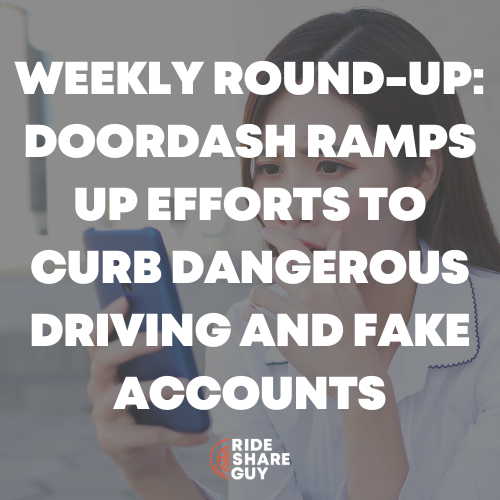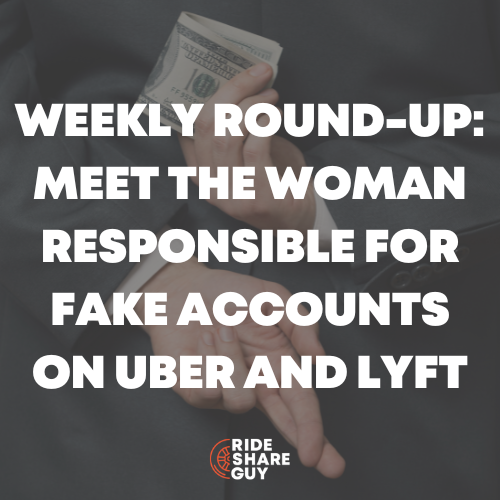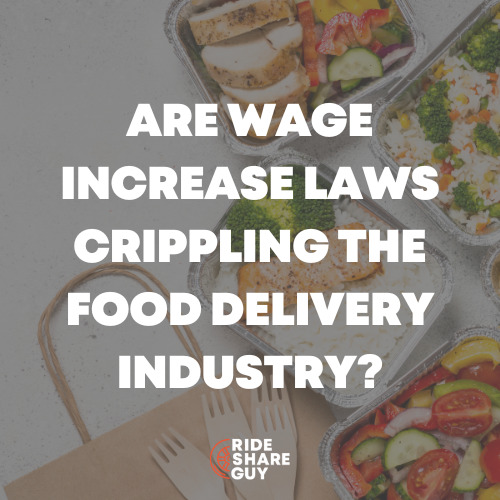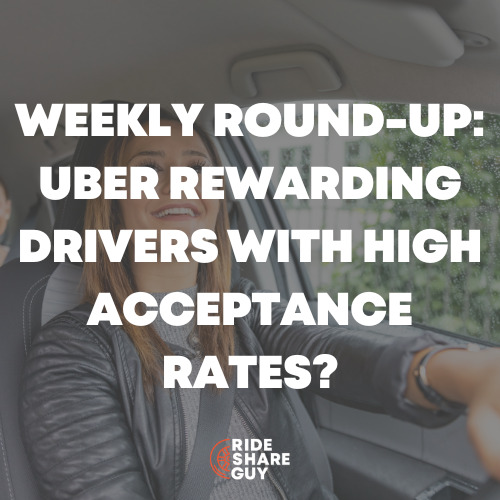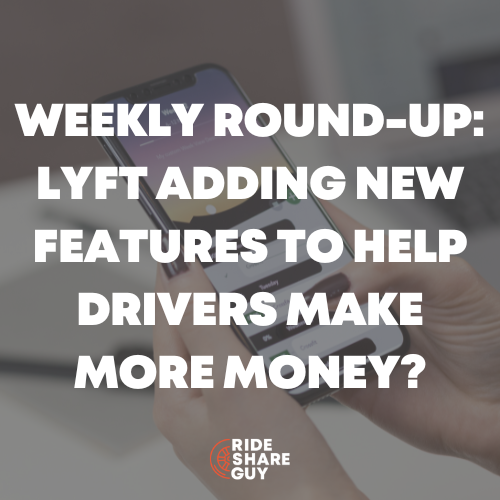Harry here, oops I knew I forgot to do something yesterday. So here’s our round-up, one day late but still with lots of good stories about all the week’s news. RSG contributor John Ince takes a look at the fallout from a potential Uber apocalypse, features a couple new competitors and shares a funny video about Waze that will make you laugh.
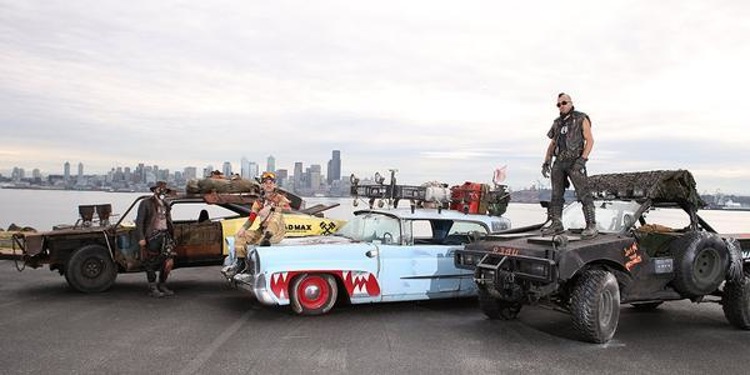
Enjoy and let us know what you think about the top stories of the week in the comments section below.
Inside the Uber apocalypse: Why the fast-growing tech giant could be in serious trouble
Sum and Substance: Uber, the ride-sharing app, not only may have gone too far in the way it treats its drivers: it could bring down the arbitration house of cards in the process. Uber treats its 300,000 drivers as independent contractors, allowing it to avoid granting worker’s compensation, overtime pay and other relevant labor benefits. Low labor costs enable the company to undercut competitors and win business. If forced to actually follow the law, Uber is just another car service. A non-trivial number of drivers are not happy with being the low-paid cog in the Uber business model, and have sued the company over misclassifying their employment status. The California Labor Commission awarded $4,152.20 in business expenses and back wages to driver Barbara Berwick in June. But Uber can handle one driver at a time; a class action incorporating all its drivers would be a fatal blow. And this September, U.S. District Court Judge Edward Chen ruled that drivers could form a class to litigate employee misclassification. The critical question is how big that class will be.
My Take: Despite a somewhat sensationalist headline, this is a thoughtful analysis of the legal battles that Uber is fighting over the independent contractor status of drivers in California. The article provides some insight into the legal complexities – especially Uber’s attempt to limit the number of drivers who are eligible to join the class action. Uber’s strategy hinges on a legal interpretation of whether their binding arbitration clause is valid. Given that most drivers (myself included) simply tapped through the screens to get to the app as soon as possible, and were completely unaware we were waiving our legal rights, it seems entirely possible that Uber will soon be facing at least 160,000 drivers in one lawsuit. That of course is the apocalypse that the David Dayen of Salon is referring to in the headline. This battle is now out in the open with major publications all over the map, including the New York Times, covering it. The story line is that the fate of the “sharing economy” is hanging in the balance … and we, as drivers, are right in the middle of this titanic battle.
Uber Driver Arrested for Felony “Wiretapping”
Sum and Substance: Uber driver Christopher David, age 29, turned himself over to law enforcement in Portsmouth, New Hampshire yesterday, Friday, November 6, 2015 after a gang issued an order to kidnap him for the alleged crime of felony wiretapping. The charge was in response to a YouTube video posted by David featuring an encounter he had while picking up passengers from the Daniel Street Tavern. In the recording, a doorman and part-time cab driver called “Big Mike” can be heard snitching on David to a nearby law enforcer (operating an Uber is violation of a Portsmouth city ordinance). The enforcer chose to exercise discretion in that instance and did not issue a ticket (or even a warning) to David. However “Big Mike” complained to law enforcement about the YouTube video and had David charged with wiretapping. That is a Class B Felony in New Hampshire, punishable by up to 7 years in prison.
My Take: Add this to the growing list of risks that ridehail drivers assume when they log into the app. This guy potentially faces up to 7 years in jail for recording a conversation with a bar bouncer and a cop. The bouncer just happened to also be a taxi driver and he tipped off the cop to David’s Ubering. The cop could have busted him there, but didn’t. Unsatisfied, the bouncer went for the bigger crime – wiretapping and suddenly David is up the proverbial s— creek. The incident sparked protest in Portsmouth which can be seen here. The takeaway here is: know state laws about recording conversations before you tap that record button.
Gett, On A Mission To Take Down Uber, Launches “Surge Sucks” Campaign
Sum and Substance: Gett, a ride-sharing platform, has spent years now trying to gimmick its way into the same competitive ring as Uber. Last summer, Gett offered flat $10 rides anywhere within Manhattan. But today the gloves are coming off. Rather than undercut their biggest competitor on pricing, the Israel-based company is looking to show users the most integral differentiating quality between Gett and Uber: Surge pricing. Users who are fed up with Uber or Lyft’s surge fees can submit them to Gett and receive full Gett credit on the price of those surge fees to be used later. Gett rounds up every charge to the nearest $5 increment ($70.64 would become $75) and will pay out up to $100 in credit to essentially cover your added Uber costs and hopefully convert you to a Gett user. Gett offers a slightly different product from Uber in that it has a bit more focus on the enterprise. Corporate clients can sign up for Gett with a corporate account and set up rides for executives and employees. That said, the consumer market is a large and growing one, and Gett must get creative in its efforts to win marketshare against behemoth Uber. Gett is also using the same “bus butt” strategy as Uber does in New York, advertising to drivers about how much they can make driving for Gett. Beyond the $100 maximum payout for Surge fees, Gett is also giving $1,000 in credit to the user who submits the highest amount of surge fares in all of New York.
My Take: Gett is throwing some serious money around to win market share and driver loyalty. However, these fare wars have to be taking a toll on the bottom line of the companies. The big question here and in all the rideshare wars is what, if anything, creates loyalty for drivers and passengers? Is it price? Is it service? Is it something intangible or imponderable? Or will drivers and passengers keep switching between offerings depending on who’s offering the best deal at the moment?
At Uber, the Algorithm Is More Controlling Than the Real Boss
Sum and Substance: In defending his company against assertions that Uber drivers should be classified as employees, Uber CEO Travis Kalanick often wields the algorithm. Uber isn’t a boss, he argues. It’s a software platform that balances supply and demand to connect entrepreneurs with customers. A new academic paper pokes holes in that argument. Researchers Alex Rosenblat and Luke Stark at the Data and Society Research Institute and New York University point out that Uber uses software to exert similar control over workers that a human manager would. It’s among a growing group of companies that increasingly rely on software to manage worker schedules and behavior. Bottom line: robots aren’t stealing your job – at least in this instance – but they’re becoming your boss. In addition, the level of control and surveillance they exert is often far greater than human management would, the authors found.
My Take: This is a huge issue with drivers. Our boss is an algorithmically based hodgepodge of ratings from people who bring varying standards and all kinds of psychological baggage with them. It’s anxiety inducing and, to my mind, a highly flawed system. Somebody is going to improve upon this, and the company that does will win the hearts of drivers everywhere.
Split is an Uber competitor with rides starting at $2. Can it last?
Sum and Substance: My girlfriend lives a little less than 3 miles northeast of me in Washington, DC; we’re on different Metro lines, and no bus runs between our neighborhoods. As recently as a few months ago, visiting each other regularly was an expensive proposition, with an Uber or Lyft costing $8 to $10 each way. But lately, I’ve been paying less than $5 to make the trip. That’s thanks to Split, a DC-based ride-sharing iPhone app which launched in May (an Android version is coming soon). It works much like Uber or Lyft, but users specify both their location and destination when they request a ride. That lets the company’s software match up riders with similar trajectories, letting drivers pick up multiple passengers and collect multiple fares at once. Uber and Lyft have experimented with this carpooling approach — with UberPool and Lyft Line — but both are costlier than Split. In DC, UberPool has a $5 floor for fares; Lyft Line isn’t here yet, but it also has a $5 floor in San Francisco. Split’s floor, by contrast, is $2. Every ride costs that, plus $1 per mile. If you’re traveling 3 miles or less, it’s always going to be cheaper than the cheapest competitor.
My Take: What I find most interesting about this new app, being marketed in DC, is that the passenger is required to enter the destination. That could be a game changer for drivers. Also, Split offers guaranteed hourly wages for drivers (for now at least). I’m wondering where they’re getting the capital to finance this. I can’t imagine that they’re making any profit at these prices w/driver guarantees … and what investor is going to be throwing money up against the Uber / Lyft / Sidecar / Gett wall of competition?
UberPool is NYC’s best new blind date spot
Sum and Substance: Uber is fast becoming the Big Apple’s hottest dating app as single New Yorkers are using the car service’s ride-share option to meet up with strangers for some back-seat romance. Although taxi riders were once reluctant to share a late-night cab ride with someone they didn’t know, passengers say the UberPool service offers the perfect setting for a spontaneous blind date. “I’ve actually never met anyone at a bar, but being in a car with someone puts you in a situation to really talk to people,” said Upper East Sider Ian Sebastian Gall, 34. The Midtown lawyer says he has gotten his share of phone numbers while sharing rides around Manhattan with available women. While using the ride-share service one evening in September, Gall struck up a conversation with a woman who lived a block away. They chatted about sports — he made fun of her for being a Red Sox fan — and grew so comfortable together that he got her phone number. On another ride, he convinced an engaged fellow passenger to hook him up with her friend.
My Take: The potential is there, but from my experience passengers seldom hit it off in the car. In fact, I’ve had several that really didn’t like each other. One ride almost ended up in a fight between passengers. Your results may vary!
If Waze Was A Person | Mike Falzone & Rob Hugel
Sum and Substance: You gotta see this …
My Take: Great five minute video that any driver who uses Waze will identify with.
What do you guys think about the week’s top stories?
-John @ RSG
